Emeralds are among the most coveted gemstones in the world, renowned for their rich green hues and timeless appeal. From ancient civilizations to modern jewelry, emerald has been prized for their beauty, rarity, and symbolic meanings. This blog delves into the fascinating world of emerald gemstones, exploring the different types, their origins, where they are mined and why they are so valuable.
Table of Emerald Types, Origins, and Mines
| Origin | Mine Locations | Colors |
| Zambia | Kagem, Miku | Deep Green, Bluish Green |
| Colombia | Muzo, Chivor, Coscuez | Rich Green, Slightly Yellow |
| Brazil | Itabira, Nova Era, Bahia | Light Green, Bluish Green |
| Russia | Ural Mountains, Malysheva | Dark Green |
| Afghanistan | Panjshir Valley | Vivid Green, Slightly Bluish |
| Ethiopia | Shakiso, Oromia | Bright Green, Slightly Yellow |
| Pakistan | Swat Valley | Bright Green, Deep Green |
| India | Rajasthan, Odisha | Yellowish Green |
| Zimbabwe | Sandawana Mine | Intense Green, Dark Green |
The World of Emerald: Description, History, and Significance
Emeralds are not only valued for their vivid green color; they also carry a rich history and cultural significance in various civilizations. The name “emerald” is derived from the Greek word “smaragdus”, which means green. This gem has been associated with royalty, wisdom and fertility since ancient times.
Colombian Emeralds: The Gold Standard

The gold standard in the emerald world are emeralds from Colombia. Most commonly they are known for their deep green color, the purest and most desirable. These emeralds from the famed mines of Muzo, Chivor and Coscuez have been worked by people since the days of the indigenous Muzo people prior to the Spanish conquest. In the gem market, Colombian emeralds are mostly associated with purity of color and clarity.
Zambian Emeralds: A Rising Star
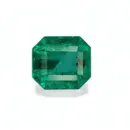
Today, Zambia is a major producer of top grade emeralds thanks largely to the large Kagem mine, the largest emerald mine in the world. The darker blue green color of Zambian emerald is what separates it from Colombian emerald. Zambian emerald, discovered in the late 1970s, quickly became popular, in part because of their durability and vivid color, and because jewelers and collectors like their red orange color.
Brazilian Emerald: The Lighter Shade
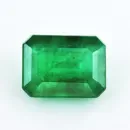
Brazilian’s emeralds are light green, even bluish often times, and famous for those qualities from the Itabira and Nova Era mines. Originally emerald were found when Portugal colonized the continent in the 16th century, and they have always been a big player in the gemstone market. But Brazilian emerald are lighter in color generally, but have the transparency, and size, making them perfect for larger gem sizes.
Russian Emeralds: The Cold Beauty
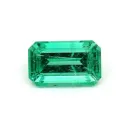
The Ural Mountain emeralds are well known for their dark green color and crystalline structure, Russian emeralds in general. Russian emeralds from the Malysheva mine have been the main source of these since about the 1830s these, however, are generally darker stones with a style all their own and will command an accordingly higher price in the gem market. Historically Russian emerald have been the exclusive property of the Russian crown.
Afghan Emerald: The Mountain Gems

Afghanistan’s Panjshir Valley is a world renowned area for producing brilliant green emerald of excellent clarity. These emeralds are found in the same quality as Colombian associated emerald discovered in the 1970. Because of the region’s rugged terrain and political instability, these emeralds are rare and much prized.
Ethiopian Emeralds: The Newcomer
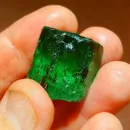
Emerald finds in Ethiopia’s Shakiso region have suddenly become important only within the last few years, first found in 2016. Ethiopian emeralds are generally quite bright green with a hint of yellow in tone. Although new to the market, these emeralds have become famous for their beauty and quality.
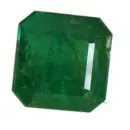
Pakistani Emeralds: The Valley’s Treasure
Swat Valley emeralds from Pakistan are among the world’s most beautiful and, in some cases, rival Colombian emeralds. Importantly, swat emeralds, found in 1958, are famous for its green color, and are also renowned for their clearness. In addition to being rare, these stones are rare because mining in such a geologically sensitive area is so difficult, increasing their desirability even further.
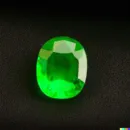
Indian Emerald: The Historical Green
Rajasthan and Odisha regions are most famous in India for emerald mining. Color of Indian emerald tend to be yellow green, and it is often used in traditional Indian jewelry. For centuries, these emeralds have been preserved, representing purity and, or, growth.
Zambian Sandawana: The Intense Green

The best known are the sandawana emerald from Zimbabwe, which can rival the finest Colombian emerald in regard to color intensity, being deep colored with top greens. These emerald were discovered in 1956, and are generally smaller, but highly prized for vivid color and excellent clarity.
Historical Significance and Value
Emerald have been loved by different cultures throughout history. In ancient Egypt, emerald were considered a symbol of eternal life and were buried with the dead. The Romans associated emerald with Venus, the goddess of love, believing they could soothe the soul and bring love to the wearer. The Incas and Aztecs of South America highly valued emerald, often using them in religious ceremonies and as offerings to their gods.
The value of emerald has always been high due to their rarity and difficulty in extraction. Unlike other gemstones, emerald often contain natural imperfections that can affect the clarity of the stone. However, these inclusions are often considered part of the character of the stone, adding to its unique beauty.
🌿 FAQs About Emerald
An emerald is a precious gemstone from the beryl family, known for its rich green color caused by traces of chromium or vanadium. It has been prized for centuries for its beauty and rarity.
Real emeralds typically have natural inclusions known as “jardin.” You can identify a real emerald by:
Checking for inclusions under a jeweler’s loupe
Looking for slight imperfections (flawless stones may be synthetic)
Testing hardness (emeralds rate 7.5–8 on the Mohs scale)
For accurate identification, consult a certified gemologist or request a gemological report.
Yes, high-quality emeralds are rarer than diamonds. While diamonds are mined in large quantities worldwide, fine Emerald with deep color and minimal inclusions are much harder to find.
The most valuable emeralds have a vivid green to bluish-green hue with strong saturation and medium to dark tone. Color uniformity is key—premium emeralds show even color throughout the stone.
Yes, but with care. Although emeralds are relatively hard (7.5–8 Mohs), they are brittle and prone to cracking. Avoid hard knocks and store them separately. Many emeralds are treated with oils to enhance appearance, so avoid ultrasonic cleaners or harsh chemicals.
Most emeralds are treated with colorless oils or resins to fill surface-reaching fractures and improve clarity. This is a standard industry practice and should be disclosed by sellers.
Conclusion
Emerald continue to fascinate the world with their stunning beauty and rich history. Whether from the ancient mines of Colombia or the emerging fields of Zambia, each type of emerald offers its own unique charm and value. The dark green color of an emerald is not only a sign of its beauty, but also a testimony of the geological history of the Earth, making it one of the most fascinating gems in the world.
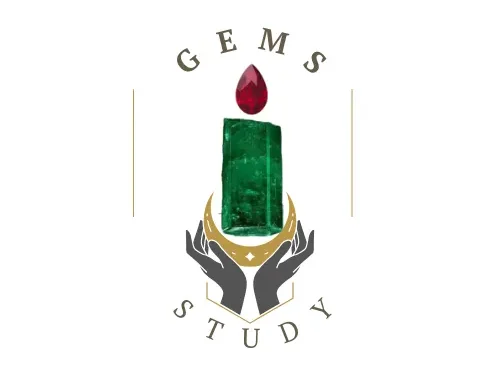
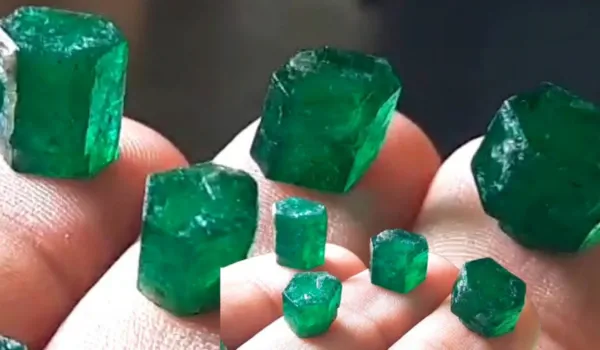
6 comments
[…] Muzo Mine in Colombia is known worldwide for its excellent emeralds. This mine, which has been producing gems for more than 500 years, is located in the Boyacá […]
[…] Emeralds: The Timeless Green Treasure of the Gemstone World – gemsstudy.com on Privacy Policy […]
Hi there! I simply want to give a huge thumbs up for the good information you have got right here on this post. I will likely be coming back to your weblog for extra soon.
Hi! Thanks so much for your kind words — it really means a lot! 😊 I’m glad you found the info helpful. We’ve got plenty more gemstone insights coming up, so I’d love to have you back anytime. Is there a particular gem or topic you’re curious about? Feel free to let me know!
I’m typically to blogging and i really respect your content. The article has really peaks my interest. I am going to bookmark your site and hold checking for new information.
Thank you so much for the kind words! I’m really glad to hear the article sparked your interest—that means a lot. 😊 I’ve got more gemstone guides and crystal tips coming soon, so definitely stay tuned! And if there’s a specific gem or topic you’d love to read about, feel free to let me know. Always happy to share more knowledge with fellow enthusiasts!